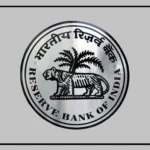If you are planning to buy a new property, there’s important news for you! The land registration process in India is changing in 2025.
These new rules aim to make the process more transparent, secure, and efficient. Not only will this benefit buyers and sellers, but it will also improve government operations.
The key changes include digital registration, Aadhaar linking, online verification, and a centralized database. Let’s take a look at what’s new.
Digital Registration: A Paperless Process
The land registration process is now becoming fully digital. You will no longer need to visit the registry office with physical documents. This saves time, money, and effort.
Benefits of Digital Registration
1) Faster process
2) More transparency
3) Less corruption
4) Secure storage of documents
Now, you can complete your land registration from home by uploading all required documents in digital format. This reduces errors and speeds up the process.
Aadhaar Linking: Ensuring Identity Verification
Under the new rules, every property will be linked to the Aadhaar card of the owner. This step will make land transactions more secure and reliable.
Benefits of Aadhaar Linking
1) Prevents fake documents
2) Confirms owner’s identity instantly
3) Helps control illegal (benami) properties
With Aadhaar linking, identifying the real owner of a property will become easier. This will reduce land disputes and prevent illegal possession.
Online Verification: Fast and Error-Free
Starting in 2025, all land-related documents will be verified online. This ensures faster processing and fewer mistakes.
Benefits of Online Verification
1) Quick document verification
2) Fewer human errors
3) Easy access to records
You will be able to check a property’s history, ownership details, and other important information with just a few clicks. This benefits both buyers and sellers.
Integrated Database: Centralized Land Records
A nationwide database will now store all land records in one place. This will make it easier to access information and improve land management.
Benefits of an Integrated Database
1) Smooth exchange of information between states
2) Better land policies
3) Improved land use planning
The central database will help the government manage land records more effectively while making it easy for people to access their land details.
Biometric Authentication: Enhanced Security
From 2025, biometric verification will be mandatory for land registration. This will almost eliminate the chances of fraudulent registrations.
Benefits of Biometric Authentication
1) High-level security
2) Verified owner identity
3) Prevention of fraud
This system will use fingerprint or iris scans to ensure that only the real owner can register the land.
E-Stamp: Digital Stamp for Secure Transactions
The traditional paper stamp will be replaced with an electronic stamp (e-stamp). This is not only more secure but also eco-friendly.
Benefits of E-Stamp
1) No need for paper stamps
2) Eliminates the risk of fake stamps
3) Easy to store and track
With e-stamps, there will be no issues of stamp paper shortages or revenue theft.
Real-Time Updates: Instant Land Information
The new system will update any changes in land records instantly, reducing the chances of disputes.
Benefits of Real-Time Updates
1) Always up-to-date information
2) Fewer property-related conflicts
3) Better planning for buyers and government
This ensures that buyers, sellers, and government agencies always have the latest property details.
Mobile App: Land Information at Your Fingertips
A new mobile app will be launched in 2025 to provide all land-related services and information.
Benefits of the Mobile App
1) 24×7 access to information
2) Easy-to-use interface
3) Quick online services
With this app, you can check land details, book appointments for registration, and access services from your smartphone.
These changes aim to make land registration smoother, more transparent, and safer for everyone.
If you’re planning to buy property, these updates will make the process much easier!
























